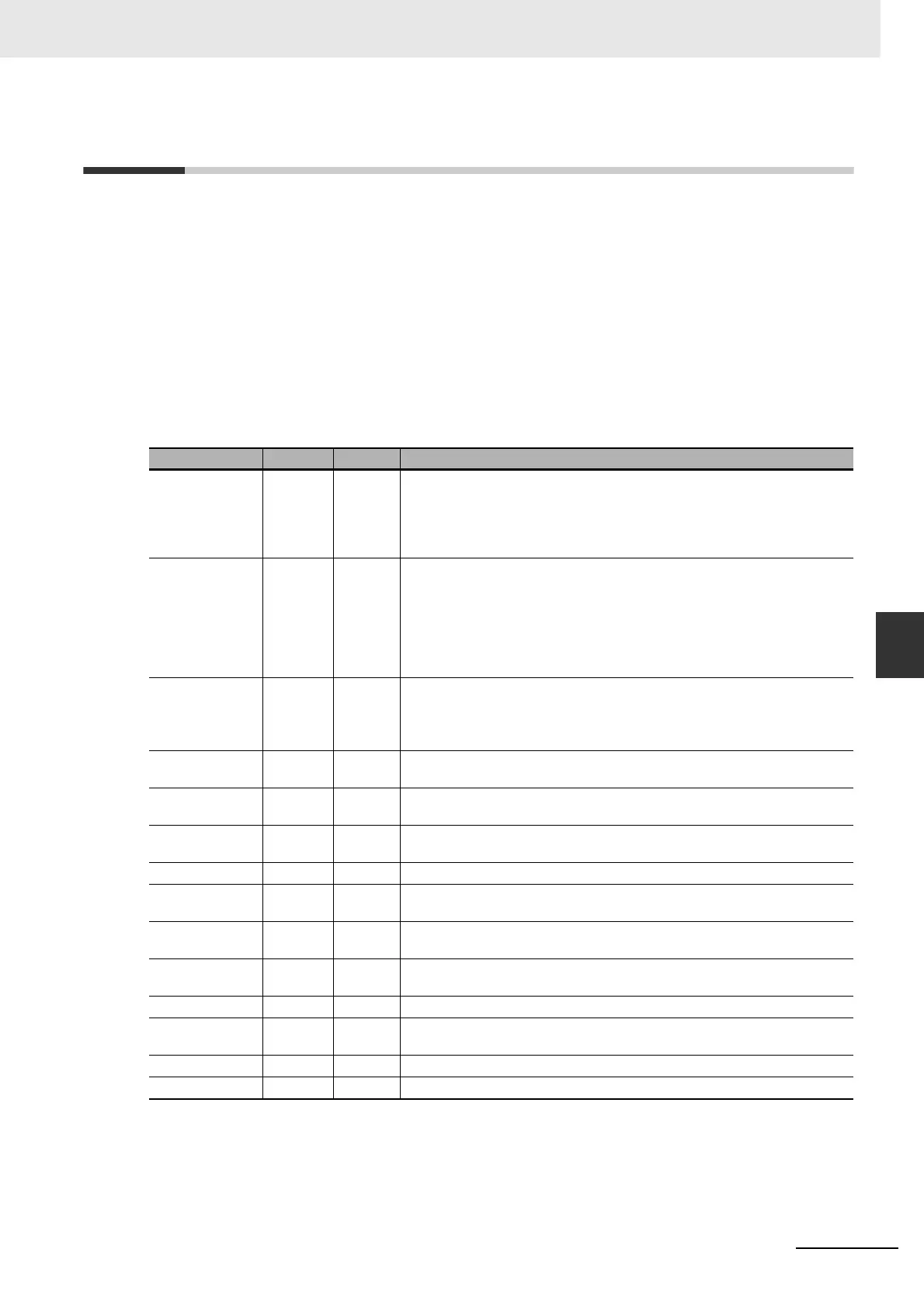6-43
6 I/O Memory Areas
CJ2 CPU Unit Software User’s Manual
6-21 Condition Flags
6
6-2-2 Output Bits
6-21 Condition Flags
The Condition Flags include the Error Flag, Carry Flag, and other flags that indicate the results of
instruction execution, as well as Always ON and Always OFF Flags. In earlier PLCs, these flags were in
the Auxiliary Area.
The Condition Flags are specified with global symbols, such as P_CY and P_ER, rather than
addresses. These flags cannot be written directly from instructions or CX-Programmer.
All Condition Flags are cleared when the program switches tasks, so the status of the Error Flag,
Access Error Flag, and other flags are maintained only in the task in which the error occurred.
The Condition Flags cannot be force-set and force-reset.
z Summary of the Condition Flags
The following table summarizes the functions of the Condition Flags.
Name Symbol Label Function
Error Flag P_ER ER Turned ON when the operand data in an instruction is incorrect (an instruction
processing error) to indicate that an instruction ended because of an error.
When the PLC Setup is set to stop operation for an instruction error (Instruction
Error Operation), program execution will be stopped and the Instruction Process-
ing Error Flag (A295.08) will be turned ON when the Error Flag is turned ON.
Access Error Flag P_AER AER Turned ON when an Illegal Access Error occurs. The Illegal Access Error indi-
cates that an instruction attempted to access an area of memory that should not
be accessed.
When the PLC Setup is set to stop operation for an instruction error (Instruction
Error Operation), program execution will be stopped and the Instruction Process-
ing Error Flag (A4295.10) will be turned ON when the Access Error Flag is
turned ON.
Carry Flag P_CY CY Turned ON when there is a carry in the result of an arithmetic operation or a “1” is
shifted to the Carry Flag by a Data Shift instruction.
The Carry Flag is part of the result of some Data Shift and Symbol Math instruc-
tions.
Greater Than
Flag
P_GT > Turned ON when the first operand of a Comparison Instruction is greater than
the second or a value exceeds a specified range.
Equals Flag P_EQ = Turned ON when the two operands of a Comparison Instruction are equal the
result of a calculation is 0.
Less Than Flag P_LT < Turned ON when the first operand of a Comparison Instruction is less than the
second or a value is below a specified range.
Negative Flag P_N N Turned ON when the most significant bit (sign bit) of a result is ON.
Overflow Flag P_OF OF Turned ON when the result of calculation overflows the capacity of the result
word(s).
Underflow Flag P_UF UF Turned ON when the result of calculation underflows the capacity of the result
word(s).
Greater Than or
Equals Flag
P_GE >= Turned ON when the first operand of a Comparison Instruction is greater than or
equal to the second.
Not Equal Flag P_NE < > Turned ON when the two operands of a Comparison Instruction are not equal.
Less Than or
Equals Flag
P_LE < = Turned ON when the first operand of a Comparison Instruction is less than or
equal to the second.
Always ON Flag P_On ON Always ON.
Always OFF Flag P_Off OFF Always OFF.
